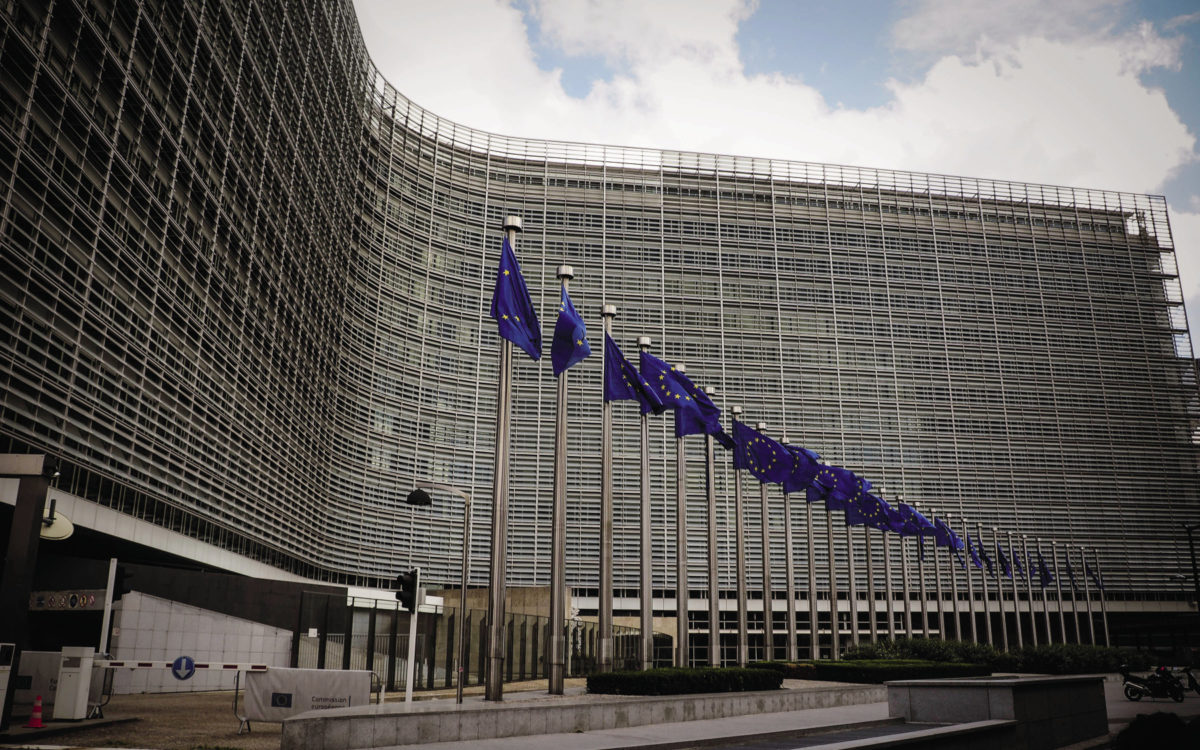From pv magazine 12/2019
 Every European is probably familiar with the brightly colored stickers on refrigerators that tell buyers about the energy-efficiency of the appliance. This scheme has been a huge success. When the ratings were introduced, the best category was “A”. Nowadays, the best refrigerators with the “A+++” label consume at most half the energy of their A-rated counterparts, and they are now easy to find.
Every European is probably familiar with the brightly colored stickers on refrigerators that tell buyers about the energy-efficiency of the appliance. This scheme has been a huge success. When the ratings were introduced, the best category was “A”. Nowadays, the best refrigerators with the “A+++” label consume at most half the energy of their A-rated counterparts, and they are now easy to find.
Another good example is the stand-by consumption of stereo systems, televisions and computers, which have not had a real on/off switch since the 1990s. Although the 2009 ecodesign regulation did not bring back the switch, standby energy consumption has come down easily by a factor of 10.
Perhaps the European Commission had a similar scheme in mind when it set up an ecodesign process for solar panels in its “Work Plan 2016 to 2019.” Four stakeholder meetings took place between spring 2017 and summer 2019. Representatives of the European Commission met with institutes such as the Fraunhofer ISE and Belgium’s Imec – along with well-known solar companies such as First Solar, LG Electronics, DuPont and Sungrow – to discuss criteria for assessing the sustainability of photovoltaic systems and potential ways to improve it.
These meetings are proceeding according to a strictly defined timetable set by the EU for such a process. Although the EU has not made them particularly reader-friendly, the documentation and minutes are all available online to ensure the transparency of the process. It is now up to the commission to propose legislation, which will then be deliberated in the European Parliament and approved by the Member States.
Likely proposals
“We expect a proposal by March 2020 at the latest,” says Andreas Wade, who is the global sustainability director at First Solar and has been involved in the process from the beginning. Of the four measures foreseen in the ecodesign process, he thinks that two are likely to be implemented. One of them is a voluntary ecolabel. It would contain product criteria which the commission defines as having less environmental impact than others. Those who meet the criteria can use the label to advertise the product. This is a measure mainly impacting the retail market.
The other measure is also voluntary. “The ecolabel will probably be linked to GPP criteria,” says Wade. GPP stands for “green public procurement” and defines sustainability criteria for a product group – criteria which member states can then voluntarily apply to public tenders.
Wade reckons that if the commission proposes such criteria, the voluntary measures could probably be implemented by 2021. It should be interesting to see what criteria for voluntary measures the EU comes up with. At present, the discussion is centered on two basic measures: one being requirements concerning hazardous substances contained in PV systems and their recyclability, and the other being, perhaps, rules for how installations are maintained and dismantled.
Mandatory measures
In addition to the voluntary measures, representatives of the commission are discussing two mandatory instruments. However, Wade thinks it less likely that these will be implemented.
The energy label would be a mandatory measure as is the case for refrigerators. PV systems would receive a label after installation, which buyers could use to assess their efficiency. The European Research Centre (JRC) in Ispra, Italy, has presented methods that enable installers to calculate the performance of any system once it has been built as a basis for issuing the label. If the label becomes compulsory, installers will be required to perform this type of calculation. Such labels could put east-west or façade systems at a disadvantage, explains Wade, depending on which calculation model the commission chooses.
Critiques of the scheme are obvious. More efficient investments are not necessarily more sustainable. Organic solar cells are a prime example of this; although they are less efficient than crystalline solar cells, they may also have a significantly lower environmental footprint. “No one in the industry is convinced by this proposal,” says Wade.
The other mandatory measure under discussion is the imposition of mandatory product design requirements, which would be compulsory for manufacturers to consider. These criteria could concern module efficiency. One of the options currently on the table is to prohibit modules with an efficiency of less than 14%. The same counterarguments apply to this issue as to the energy label.
With today’s technologies, there are no longer any modules that even come close to this lower limit. However, the industry is more likely to accept regulations that address “hotspots in lifecycle analysis,” as Wade calls them. These are the phases of the lifecycle that have the greatest environmental impact, like recycling.
Coal/nuclear comparison
When compared to the positive examples of refrigerators and stand-by power consumption, the lever to enhance sustainability of PV products seems to be much shorter. PV panels do not consume electricity, the efficiency difference between most currently installed panels is small and, ultimately, all modules should have a positive carbon footprint.
When considering the effort involved in creating the new standard, the question arises as to why the only technology under consideration is PV, which according to a comparative lifecycle assessment carried out by the United Nations in 2015, has a small environmental footprint compared to electricity generation based on fossil fuels.
To understand the answer to this question, we have to go back a few years. At the beginning of the “Product Environmental Footprint” pilot process, which was started concurrently with the ecodesign discussion, there was also a suggestion to apply it to all power-generation technologies, says Wade. Some say that this was politically difficult to agree on, however. There was too much opposition to an “official” comparison of energy sources.
At the same time, European research institutes such as the Fraunhofer ISE and France’s CEA-INES, as well as manufacturers such as SolarWorld and SunPower, proposed a study on the sustainability of PV.
“They also wanted to create an opportunity to differentiate the European solar industry,” recalls Wade. This led to the process of drawing up guidelines for the environmental impact assessment, which is now entering its next phase. Wade also sees this solution in a positive light. “Using the example of photovoltaics, we are now showing that it is possible to conduct this type of lifecycle assessment for electricity,” he says. “After that, we can push for the inclusion of other energy sources.”
Whether it is still possible to differentiate a potentially newly emerging European solar industry today is questionable, however. At PVSEC, which was held in Xi’an, China, in early November, the China Photovoltaic Industry Association (CPIA) and well-known Chinese manufacturers launched the China Eco PV Alliance.
Discussions in China are proceeding along the same lines as those in the EU. “Asian manufacturers are also working hard on sustainability issues,” says Wade. The challenge in Europe is that the knowledge of the large crystalline module manufacturers is missing from the ecodesign process.
This content is protected by copyright and may not be reused. If you want to cooperate with us and would like to reuse some of our content, please contact: editors@pv-magazine.com.



1 comment
By submitting this form you agree to pv magazine using your data for the purposes of publishing your comment.
Your personal data will only be disclosed or otherwise transmitted to third parties for the purposes of spam filtering or if this is necessary for technical maintenance of the website. Any other transfer to third parties will not take place unless this is justified on the basis of applicable data protection regulations or if pv magazine is legally obliged to do so.
You may revoke this consent at any time with effect for the future, in which case your personal data will be deleted immediately. Otherwise, your data will be deleted if pv magazine has processed your request or the purpose of data storage is fulfilled.
Further information on data privacy can be found in our Data Protection Policy.